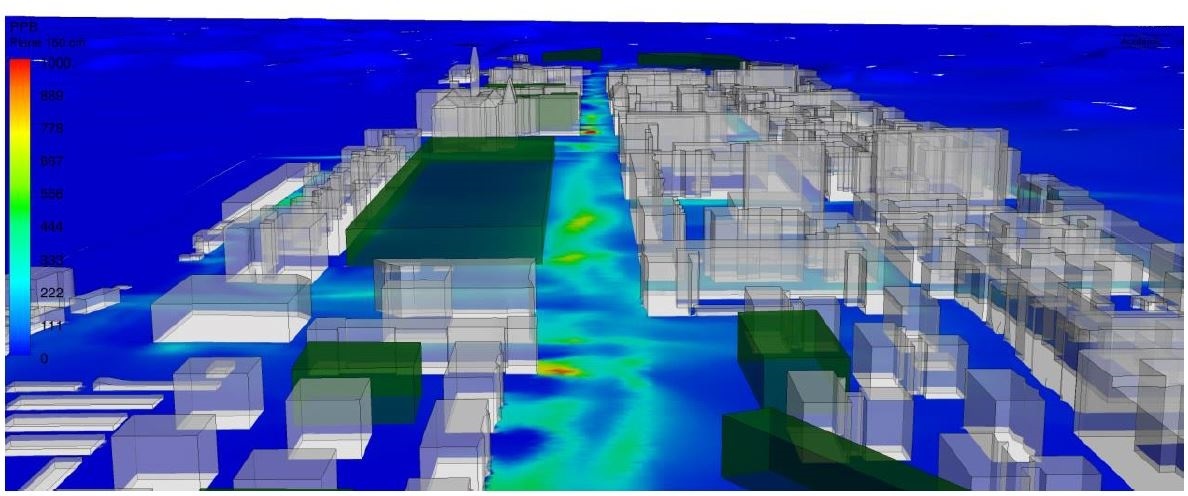Urban air quality modelling
 Figure: NOx concentration values of the simulation in Győr, Hungary of a full transient RANS simulation of 1 day air polltution emission and dispersion. Computational time: 10 hours 16 cores. Emission is from microscopic, validated traffic simulation.
Figure: NOx concentration values of the simulation in Győr, Hungary of a full transient RANS simulation of 1 day air polltution emission and dispersion. Computational time: 10 hours 16 cores. Emission is from microscopic, validated traffic simulation.
High level of air pollution in cities is responsible for many health problems. For this point both long term and short term high level exposures are dangerous. We know that there can be statistically significant differences in air pollution levels of even close points along a street.
Decision makers often run models to predict air quality under different constraints, e.g. traffic and meteorology data. It is therefore expected that the model be fast, easy-to-use and give a high resolution in time and space. These requirements work against each other, namely high resolution in space would require complete CFD models, which are rather slow both in pre-processing and running time. On the other hand, there are several canyon models that run very fast with pretty simple user interface at excellent overall accuracy but they suffer from moderate accuracy under certain conditions, e.g. free ventilations of the street.
Our research aims at developing a multilevel CFD model that tries to make a compromise between the objectives.
An overview of the 3DAirQC workflow:

